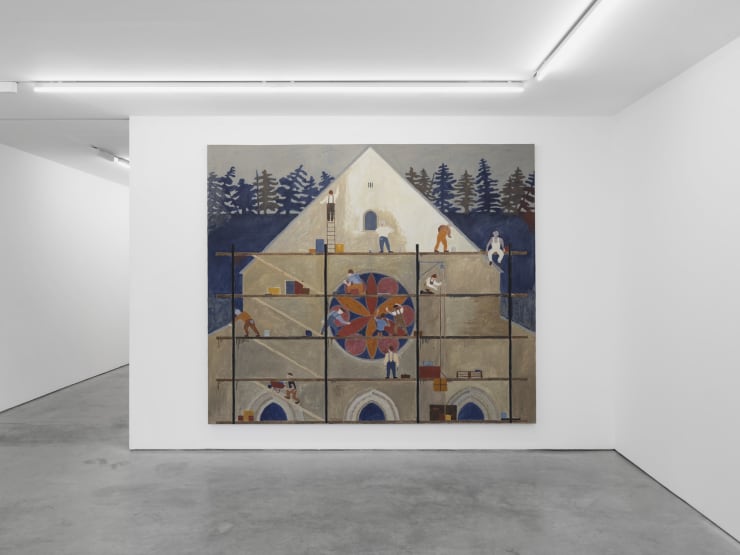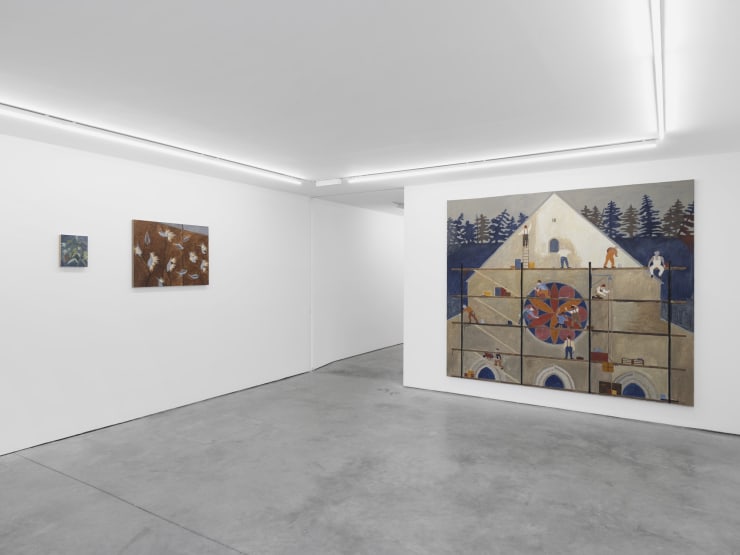The Hands That Comb The Hills: James Morse
Cob Gallery is proud to launch its 2024 programme with its inaugural ‘dual’ exhibition, presented across two exhibition spaces. In Gallery One, American landscape painter James Morse will present his UK debut The Hands That Comb The Hills. Gallery Two will host Alchemical Landscape, a complementary selection of work by British artists Tom Bull and Sholto Blissett.
Beginning in 2024, Cob’s dual exhibition series presents solo shows by established international artists alongside exhibitions of work by emergent UK-based practitioners – an ongoing focus of the gallery’s programming. Cohering around shared atmospherics or thematic concerns, these exhibitions aim to spark new dialogues; they are conceived in terms of conjunction and counterpoint rather as paired or grouped presentations.
Morse, Bull and Blissett share an understanding of landscape and the ‘natural’ world as something rich with unresolved questions about culture, identity and meaning: as not only a place, but an idea that is both heavy with prewritten significance and constantly re-imagined anew. Displayed alongside one another, the artists’ preoccupations with these ideas crystallise as a distinctively contemporary vision of landscape for the present moment.
The Hands That Comb The Hills | James Morse
-
 James MorseOn The Lake, 2023Oil on linen101.6 x 121.9 cm
James MorseOn The Lake, 2023Oil on linen101.6 x 121.9 cm
40 x 48 in -
 James MorseThe Hands Suffice, 2023Oil on linen195.6 x 228.6 cm
James MorseThe Hands Suffice, 2023Oil on linen195.6 x 228.6 cm -
 James MorseWoodsmoke On The Bay, 2023Oil on wood25.4 x 33 cm
James MorseWoodsmoke On The Bay, 2023Oil on wood25.4 x 33 cm
10 x 13 in -
 James MorseWeft Upon The Warp, 2023Oil on wood35.6 x 45.7 cm
James MorseWeft Upon The Warp, 2023Oil on wood35.6 x 45.7 cm
14 x 18 in -
 James MorseStarlight Never Fades, 2023Oil on mounted cotton20.3 x 25.4 cm
James MorseStarlight Never Fades, 2023Oil on mounted cotton20.3 x 25.4 cm
8 x 10 in -
 James MorseNew Seed, 2023Oil on linen61 x 81.3 cm
James MorseNew Seed, 2023Oil on linen61 x 81.3 cm
24 x 32 in -
 James MorseThe Humming Couple, 2023Oil on linen81.3 x 96.5 cm
James MorseThe Humming Couple, 2023Oil on linen81.3 x 96.5 cm -
 James MorseSatisfied Folk, 2023Oil on linen152.4 x 160 cm
James MorseSatisfied Folk, 2023Oil on linen152.4 x 160 cm
60 x 63 in

















